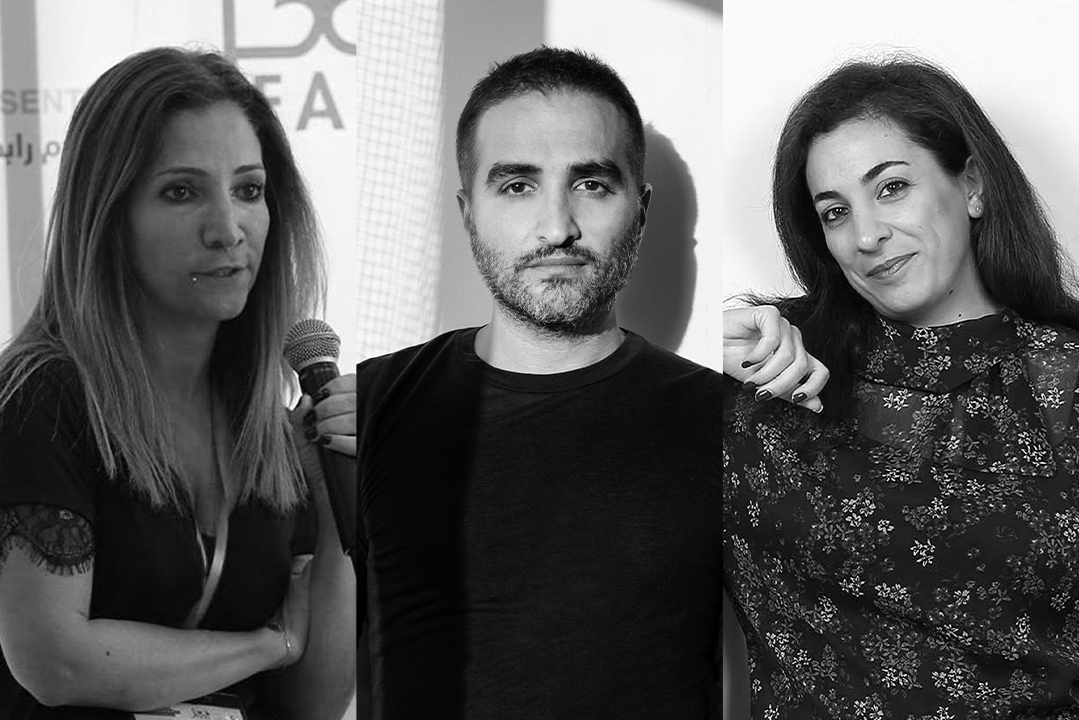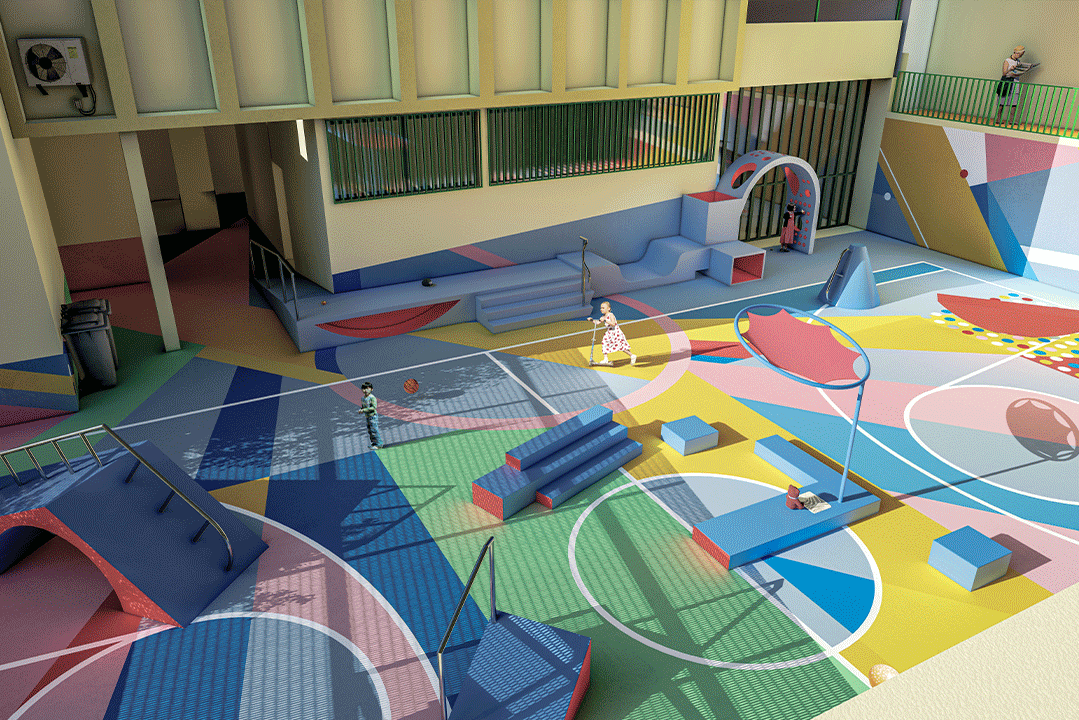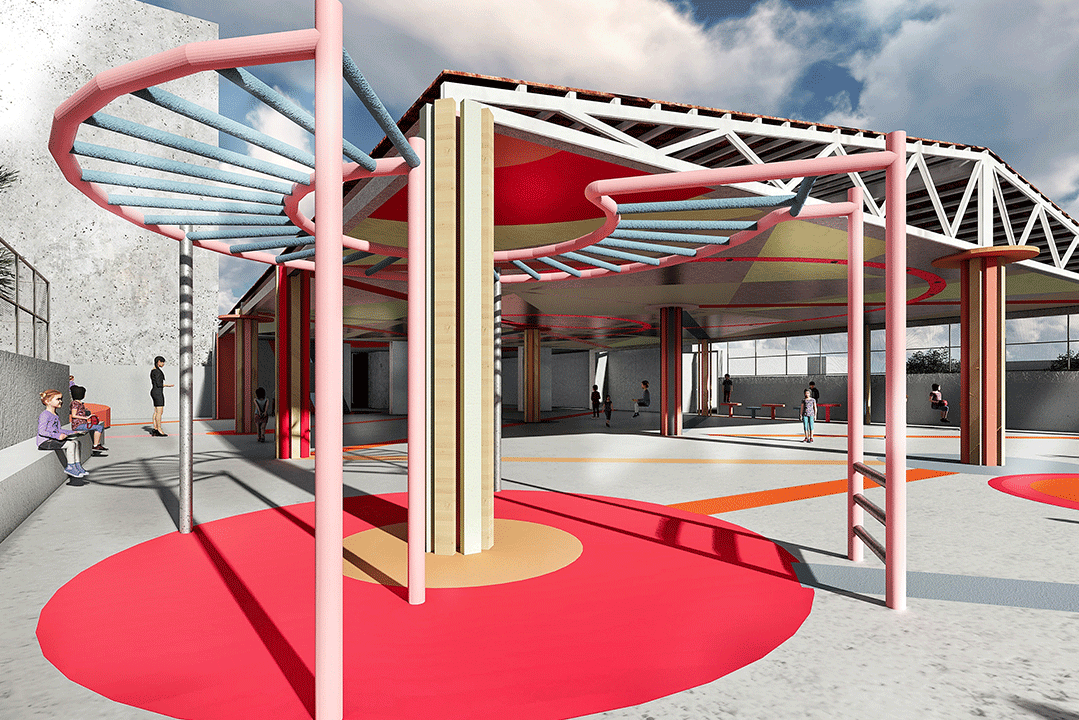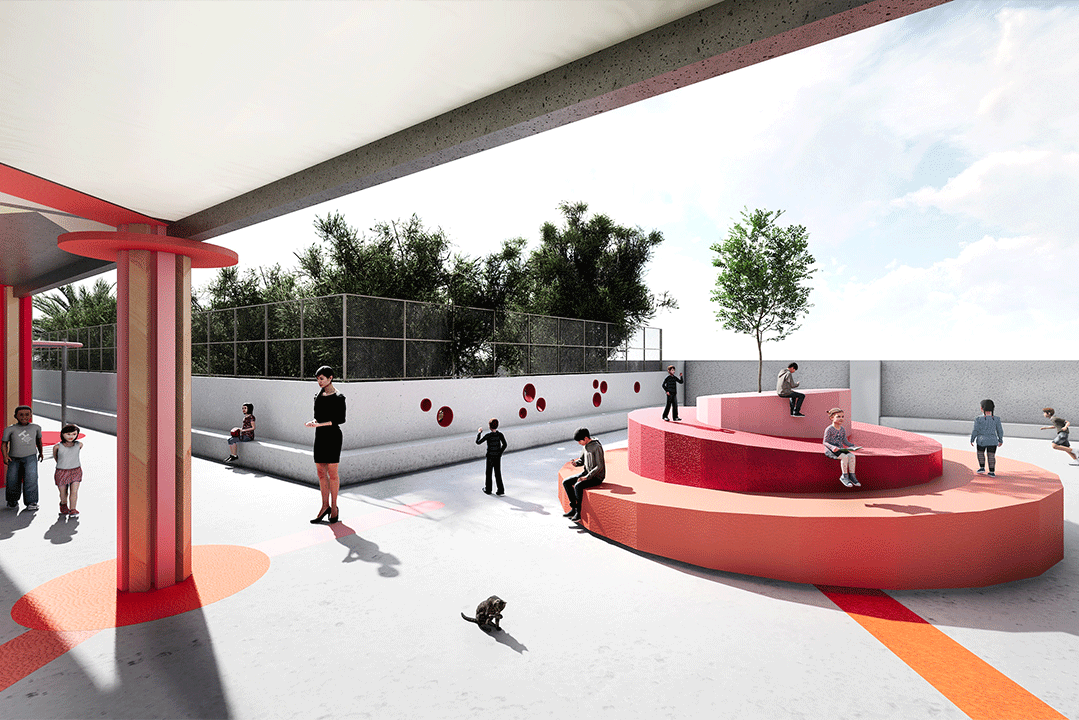Almost a year has passed since Beirut was shaken to its core by the port explosion. And while the world’s focus may no longer be on our beloved capital, we continue to follow the work of those who are helping the city get back on its feet. In this exclusive interview, we learn more about Let’s Play, an initiative founded by three Lebanese architects that aims to rebuild the school playgrounds devastated by the blast.
 Etienne Bastormaji, Nada Bourji and Sandra Richani are no ordinary people. Accomplished architects, the trio decided to join forces and launch a project to bring hope to the younger generation of Beirut in the aftermath of the explosion on August 4, 2020.
Etienne Bastormaji, Nada Bourji and Sandra Richani are no ordinary people. Accomplished architects, the trio decided to join forces and launch a project to bring hope to the younger generation of Beirut in the aftermath of the explosion on August 4, 2020.
 You are all architectural designers. What encouraged you to work together, and what can you tell us about the Let’s Play initiative?
You are all architectural designers. What encouraged you to work together, and what can you tell us about the Let’s Play initiative?
All three of us were devastated after the explosion. We knew that we wanted to help, but we were not ready to start immediately. Also, we wanted to help through what we can do best: design. While most initiatives and NGOs responded to emergency by providing shelter and food, we wanted our contribution to be therapeutic. The idea for Let’s Play developed when we accidentally entered a school during our field visits. We were shocked by the destruction. Covid-19 had kept students away from school, but we thought of the day they would come back to school. We decided to create a happy surprise for them.
We believe that kids playing is the purest form of resistance; it is the most creative, rebellious and therapeutic approach to deal with trauma. It is true that children can play anywhere, but they appreciate the additions: the colors, the games, the small touches. We believe that this initiative started from a selfish desire to recover — to believe in our city and our ability to make a difference.
How did you select which school playgrounds to fix?
When we first started, 44 playgrounds was our initial number. After mapping, we found 98 severely damaged schools and many others moderately damaged, with an estimate of three playgrounds per school. The selection process started with schools closest to the explosion site. From there, it was a case of discovering and mapping.

What have been the biggest challenges and greatest accomplishments?
The biggest challenge was the mapping and coordinating with so many different entities — whether it was schools, the design volunteers, NGOs and their funding agencies, the contractors and so many more involved parties in the process.
We will feel the success of Let’s Play by watching kids learning to play again at our playgrounds. In parallel, we hope to develop our initiative to tackle all forms of collective play. Let’s Play can grow beyond school playgrounds to include communal and public spaces.
 What is your wish for Lebanon?
What is your wish for Lebanon?
We hope that Let’s Play becomes an attitude not only an initiative. We want this project to grow and for communal play areas to increase in number. The youth has the right to enjoy life in the city, and we hope that everything the country and the world is going through doesn’t transform us into bitter, helpless residents who accept the status quo. The young generation is our hope. We want to make sure that they continue to grow happily, conscious of their rights to occupy the city and transform it, challenging the difficult conditions they are facing.
Loading
